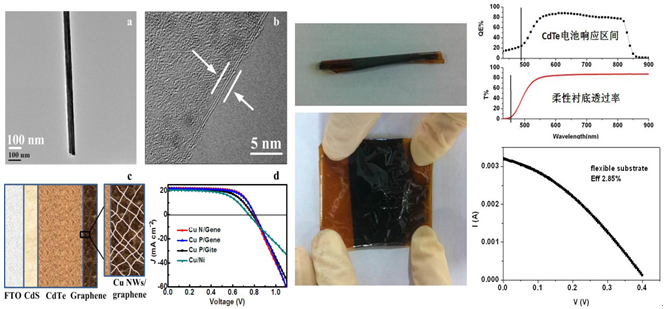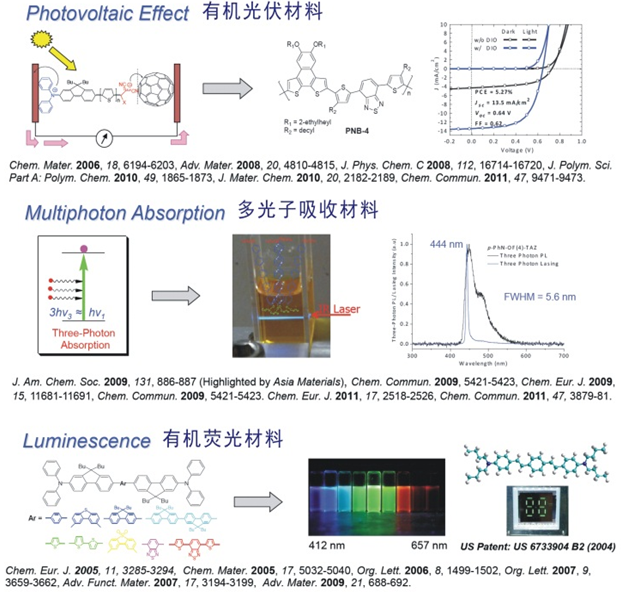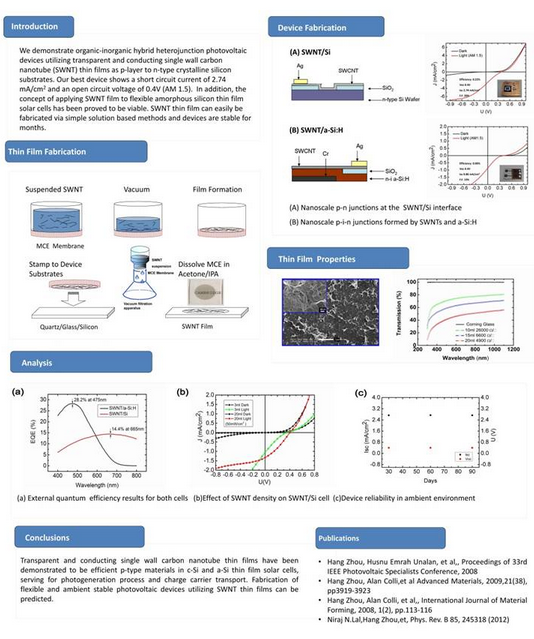Current activities of the laboratory cover a broad spectrum, ranging from fundamental research to industrial technology transfer. The lab masters processes of device fabrication for a wide variety of high-efficiency thin-film solar cells and high-efficiency crystalline silicon solar cells, New solar energy materials, including organic semiconductor, copper zinc tin sulfide, et al. New concept solar cells with low dimensional interface structures Innovation of synthesis, fabrications and applications of flexible thin film.
1. Inorganic thin film solar cell
CdTe has a proven performance advantage over conventional solar modules.The maximum efficiency of an ideal solar cell is around 30%, but now it is 17.3% by First Solar Co..Another, the cost must decrease sharply as to higher than the troditional resource. For commercial production,a solution is necessary to find in near future. We proposed controlled low-dimentional interface to thin film solar cell on flexible substrate.
Copper indium gallium (di)selenide (CIGS) is a I-III-VI2 semiconductor material composed of copper, indium, gallium, and selenium. CIGS is a tetrahedrally bonded semiconductor, with the chalcopyrite crystal structure, and a bandgap varying continuously with x from about 1.0 eV (for copper indium selenide) to about 1.7 eV (for copper gallium selenide). It is used as sucessive gradient band gap light absorber material for thin-film solar cells.By far its efficiency is 20.3%, the highest compound thin film solar cell.The barrier to popular resource is that the uncontrolled process. We cooperated to CIGS target material company and equipment company for high yield flexible CIGS solar cell.
Reference:Jun Liang, et. al., Novel Cu Nanowires/Graphene as Back Contact for CdTe Solar Cells, Adv. Func. Mater., 2012, 22, 1267-1271
2. Flexible organic solar cell
Organic solar cells are solar cells with organic photoabsorbing materials, such as semiconductive polymers or small molecules. The flexible and low-cost nature of the organic materials has become the most promising new materials in photovoltaic applications. Currently, the world record organic solar cell with efficiency higher than 10% has been reported. Our objective is to further improve the solar cell efficiency and the device stability. Our research is to synthesize and modify polymer molecules such as their lengths and functional groups, which could potentially change the their optoelectronic properties and the device fabrication techniques.


4. Thin film solar cell test process
Solar Cell Materials and Device Characterization
Contact: Dr. Liang E-mail: liangjun@pkusz.edu.cn